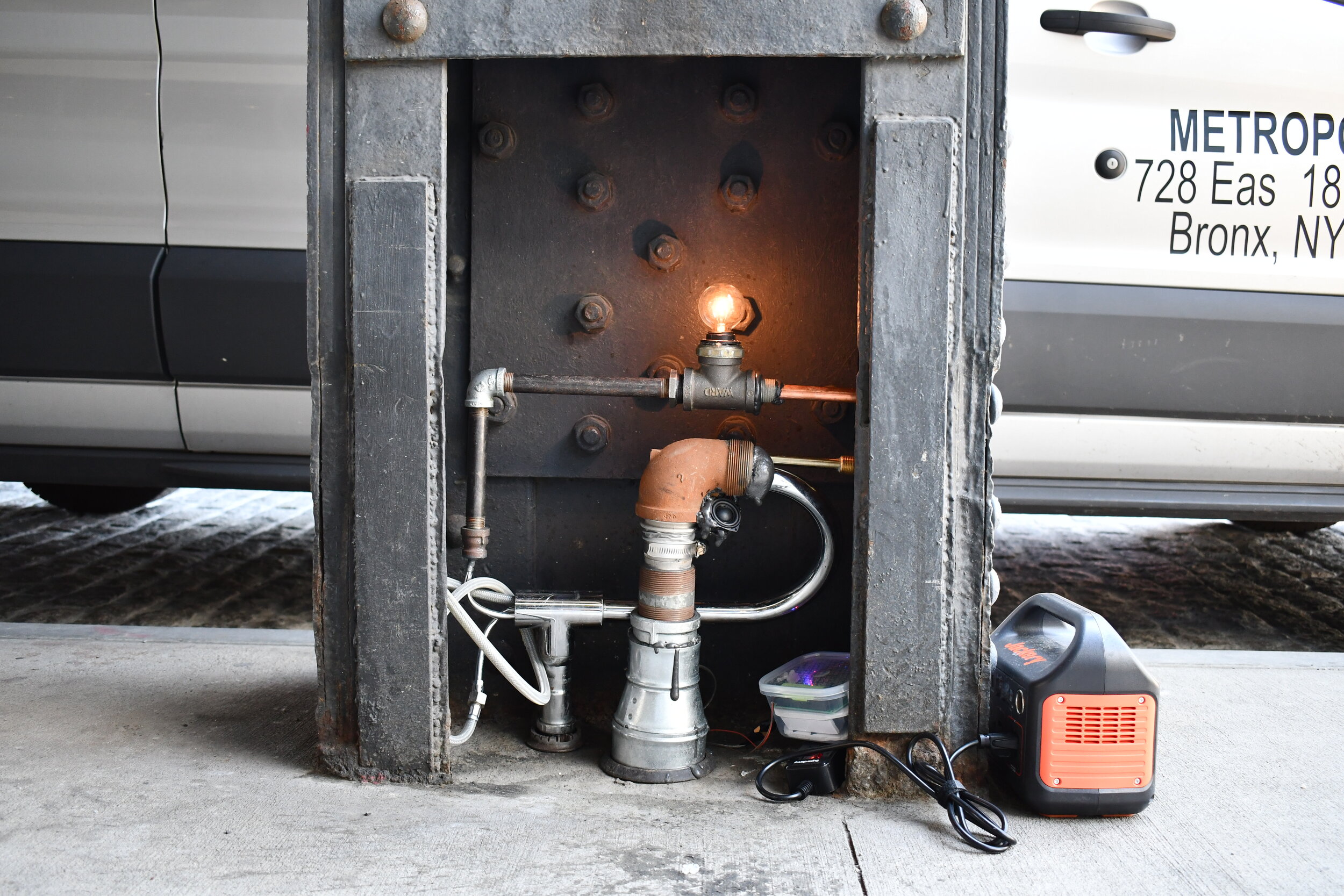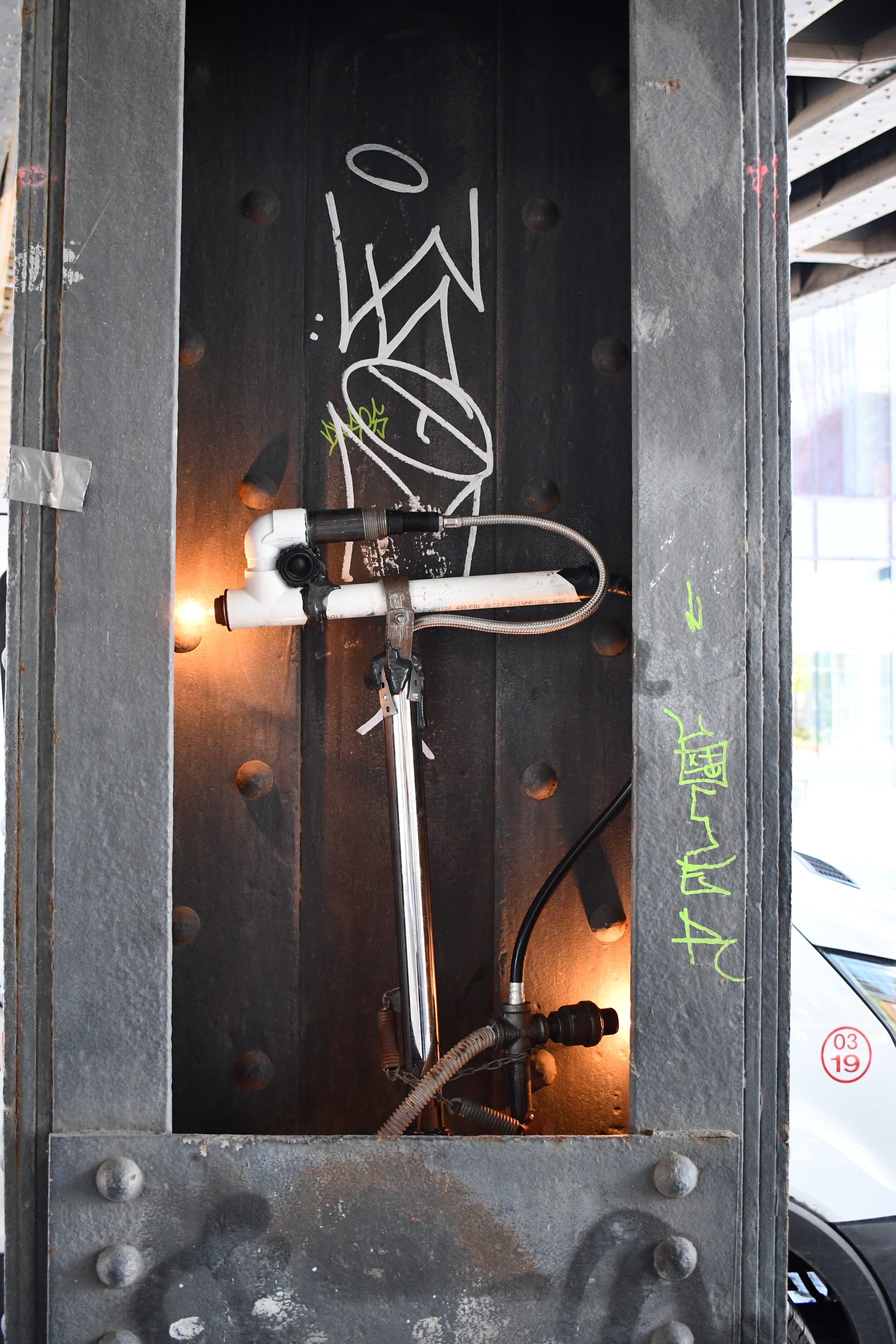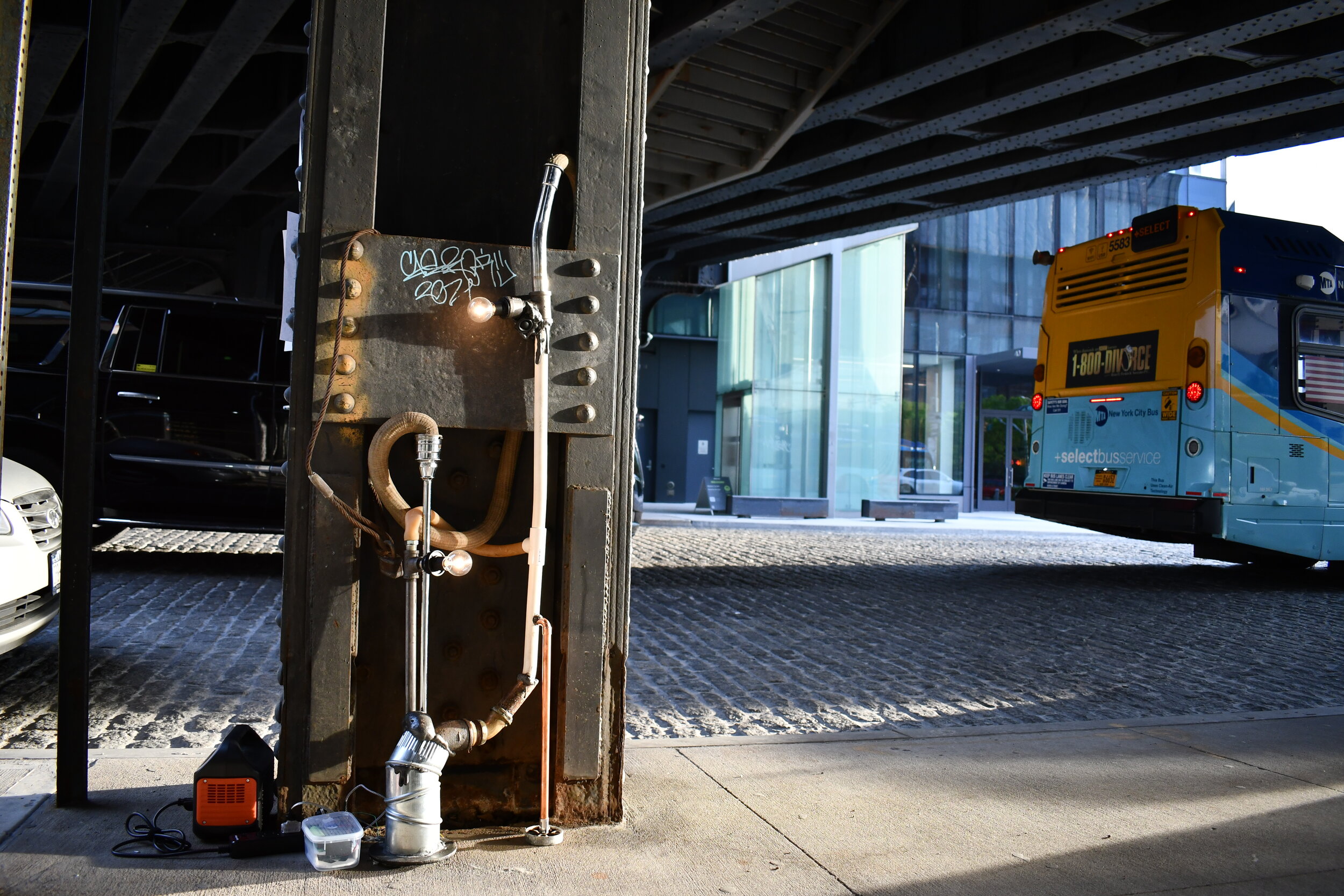Belly of the Beast
2021 - 3
This collaborative installation that asks people to call a dedicated phone number and anonymously leave a message in response to the prompt - ‘What do you need to scream about?’ Contributions are played through three publicly installed sculptures, made of interlocking pipes, speakers, and ‘talking lights’ that flicker in time with the voices emanating from them. Originally installed under the looming infrastructure of the High Line, the lights emerging from these mechanical guts collectively flicker like fireflies - spots of light emerging from darkness, from ‘ the belly of the beast.'
This project aims to validate the realities of people often rendered voiceless or invisible by the powers that be, and create commonality by suggesting we are all surrounded by the same system, but we also all have the power to expose it and resist it from within.
The project originally had a dedicated website with an anonymous audio archive - that archive has been recreated and is available via the link below.
Sizes range from 17.5 x 7 x 20" to 14 x 5 x 66”
Reclaimed and locally sourced pipes, tubes, and fittings, anonymous audio contributions, urethane foam, light bulbs, speakers, amplifiers, light organs, wiring
ADD YOUR VOICE - CALL 347 560 8199
2023 - at westbeth Gallery, ‘Paroxysm’
2021 - at Art in Odd Places: ‘Normal’
The High Line’s History & Impact:
The High Line, proposed by ‘Friends of the High Line’ founders Joshua David and Robert Hammond (and still run by that non-profit conservancy), was built between 2006 and 2014. It’s founders did not consider the park’s potential negative impacts on longtime residents and businesses in West Chelsea when they conceptualized the project, and did not adequately involve them in its planning and execution - only allowing input on inconsequential decisions such as ‘should we use blue or green paint.’
As a result, the neighborhood has since attracted millions of tourists, high end commercialism, soaring property values, and imperialist art institutions like The Whitney… while residents and local businesses have been pushed out. The park project that was propositioned as a resource to everyone has become a late-capitalist monument to private funding, neoliberal disney-fication, and the eco-gentrification of ‘public’ space, making many lower income, minority, and immigrant communities once central to Chelsea feel unwelcome. Of the 5 million people who visit The High Line annually, 4/5 are tourists.
Glitzy expensive greening projects like this have become a popular means of eco-gentrification - in reclaiming disused urban space for “world-class” greenways, typically in lower income communities of color, those longtime residents of the area end up displaced. Other strategies to urban greening exist - but local governments and organizations have to be willing to engage locals and put their quality-of-life and environmental concerns over profit.
The 'Friends of the High Line' board includes luxury real estate developers, Goldman Sachs higher ups, Bloomberg Associates principles, Ford Foundation’s president and board members, Tiffany & Co and Diane Von Furstenberg execs, billionaire hedge fund manager and former Blackstone president, and more…. Corporate partners additionally include Google, J.P. Morgan, Coach, The Standard, Whole Foods, and more…
For more information:
Washington Post - How Landscape Urbanism is Making Gentrification Look Like Fun
The Guardian - The Dangers of Eco-gentrification: What's the Best Way to Make a City Greener
Nexus Media News - The Curse of 'Green Gentrification'
NYCROPOLIS, Macaulay Honors College and Queens College - The Gentrification of West Chelsea
Science Direct - Eco-gentrification and Who Benefits from Green Amenities - The High Line







